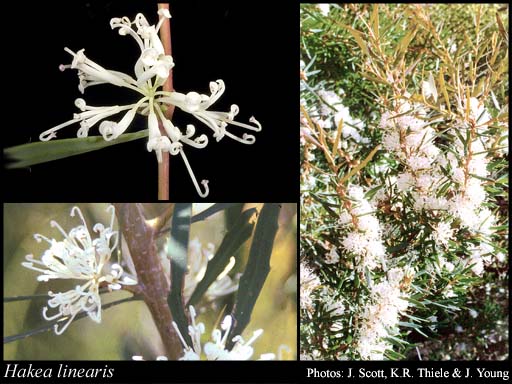- Reference
- Trans.Linn.Soc.London 10:183 (1810)
- Conservation Code
- Not threatened
- Naturalised Status
- Native to Western Australia
- Name Status
- Current
Shrub or tree, 0.6-4 m high. Fl. white-cream, Jan to May or Oct to Dec. Grey, brown or black sand, sandy clay. Seasonally-wet flats, granite rocks.

Scientific Description
Shrubs, 0.6-4 m high; branchlets glabrous. Leaves alternate, 25-90 mm long, 2-11 mm wide, glabrous; lamina flat, widest around the middle or more or less the same width throughout, once divided, pinnately divided, entire or shallowly divided. Inflorescences axillary, white; pedicels 2.5-4 mm long. Perianth 5-7 mm long, glabrous; ovary glabrous; pistil 8-10 mm long, pollen presenter oblique, style glabrous. Follicles 15-25 mm long, 7-10 mm wide, corky tetrahedral projections (on external surfaces of fruit) absent; seed 12-15 mm long (including wing), 6-8 mm wide, the wing discontinuous, apical. Flowers in January, February, March, April, May, October, November or December. Occurs in the South-west (SW) Botanical Province(s), in the Swan Coastal Plain (SWA), Jarrah Forest (JF), Warren (WAR) or Esperance Plains (ESP) IBRA subregion(s).
Distribution
- IBRA Regions
- Esperance Plains, Jarrah Forest, Swan Coastal Plain, Warren.
- IBRA Subregions
- Fitzgerald, Perth, Southern Jarrah Forest, Warren.
- IMCRA Regions
- WA South Coast.
- Local Government Areas (LGAs)
- Albany, Augusta Margaret River, Busselton, Cranbrook, Denmark, Manjimup, Nannup, Plantagenet, West Arthur.